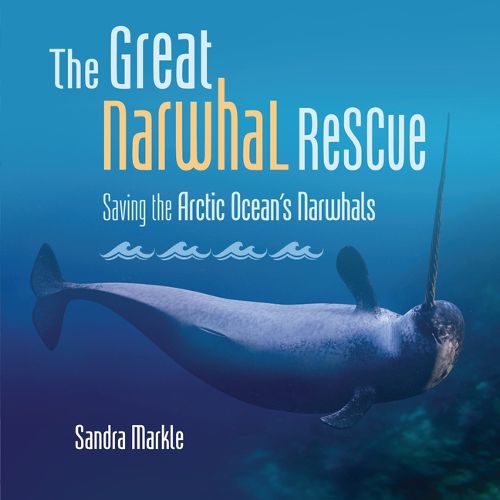Readings Newsletter
Become a Readings Member to make your shopping experience even easier.
Sign in or sign up for free!
You’re not far away from qualifying for FREE standard shipping within Australia
You’ve qualified for FREE standard shipping within Australia
The cart is loading…






With their long tusks, narwhals are unique whales that live in the Arctic Ocean.
But as climate change causes global temperatures to rise, less and less sea ice is covering the Arctic Ocean each year. Narwhals are left vulnerable without the ice, which historically provided them with safe areas to roam out of reach of their natural predators, killer whales. And humans are taking advantage of the clearer water, searching and drilling for oil and hauling cargo. So as Arctic sea ice shrinks, a new challenge emerges: noise pollution from human activity. The thrum of engines and other man-made sounds threaten narwhals ability to locate food, communicate with other narwhals, and use echolocation to navigate while migrating.
How can people reduce noise pollution in the Arctic Ocean to help them? Follow along as scientists study the effects of noise pollution on narwhals and work to ensure they have a hope-filled future.
$9.00 standard shipping within Australia
FREE standard shipping within Australia for orders over $100.00
Express & International shipping calculated at checkout
With their long tusks, narwhals are unique whales that live in the Arctic Ocean.
But as climate change causes global temperatures to rise, less and less sea ice is covering the Arctic Ocean each year. Narwhals are left vulnerable without the ice, which historically provided them with safe areas to roam out of reach of their natural predators, killer whales. And humans are taking advantage of the clearer water, searching and drilling for oil and hauling cargo. So as Arctic sea ice shrinks, a new challenge emerges: noise pollution from human activity. The thrum of engines and other man-made sounds threaten narwhals ability to locate food, communicate with other narwhals, and use echolocation to navigate while migrating.
How can people reduce noise pollution in the Arctic Ocean to help them? Follow along as scientists study the effects of noise pollution on narwhals and work to ensure they have a hope-filled future.